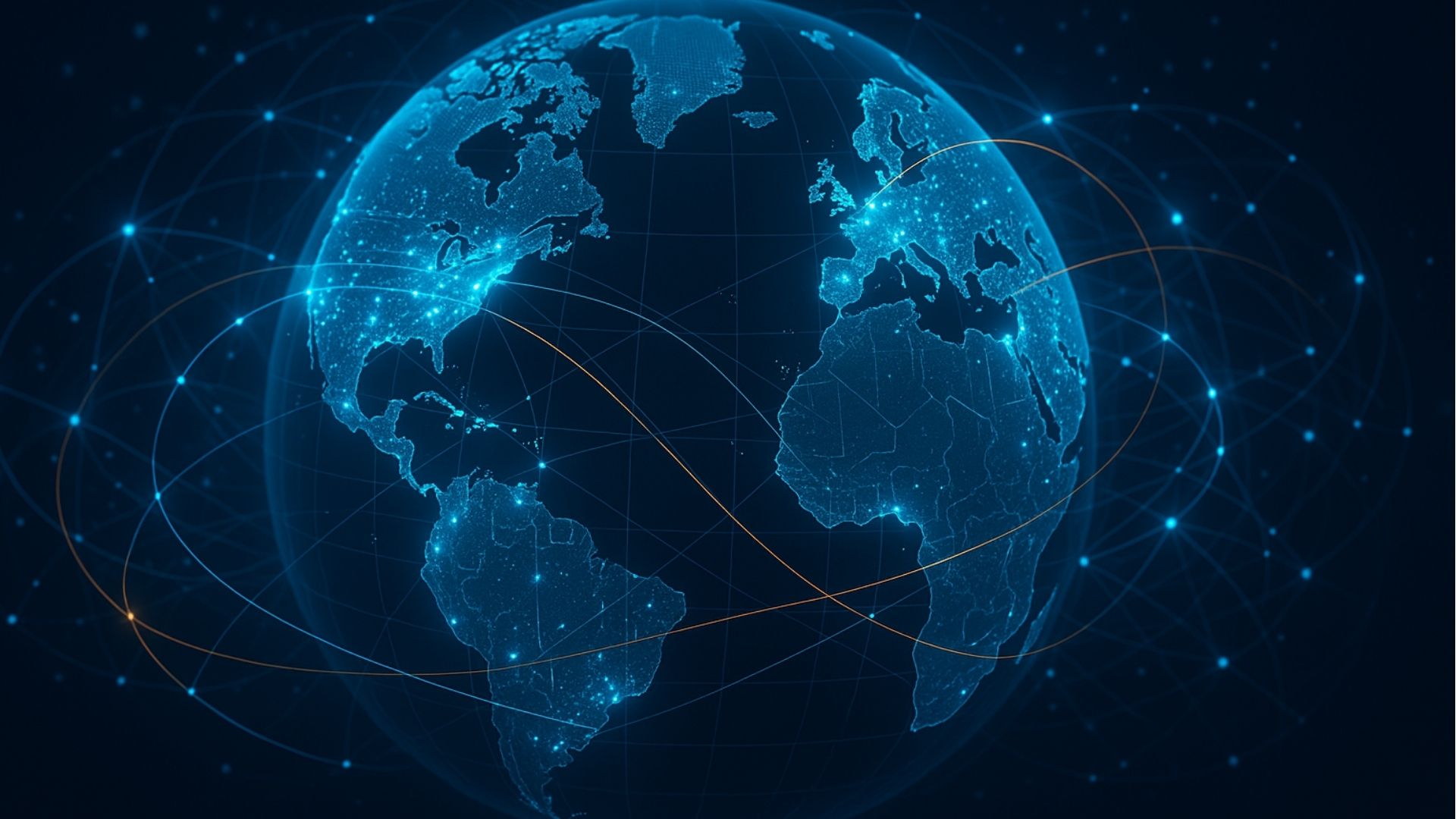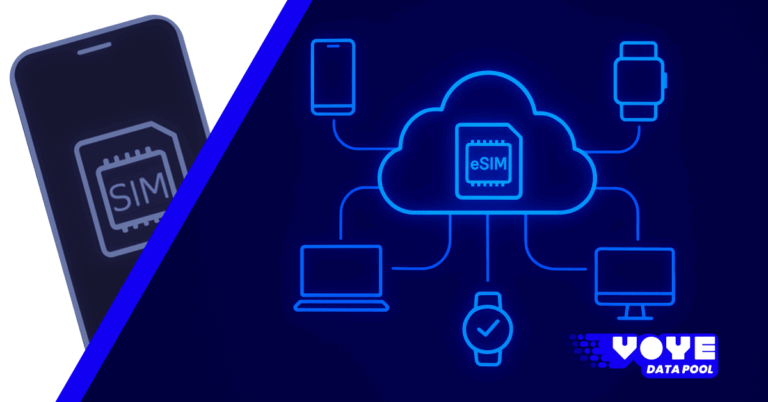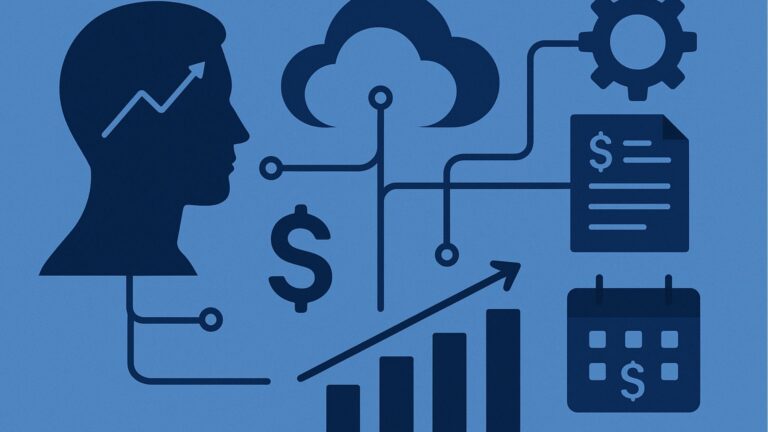How Real Time Usage Insights Help Enterprises Control Data Spend Across Continents
As global enterprises expand across borders, controlling data spend becomes increasingly complex. Real time usage insights provide the visibility and intelligence needed to manage connectivity efficiently across continents. With live tracking, predictive analytics, and automated alerts, businesses can prevent overspending and optimize resources. From logistics to retail, enterprises using real time insights gain financial transparency, agility, and stability in an ever-connected world.

Enterprises today are more connected than ever before. From global teams working remotely to smart IoT devices running in different regions, the modern business ecosystem thrives on uninterrupted data access. But with global connectivity comes a serious challenge — managing and controlling data costs across continents.
This is where real time usage insights transform how enterprises operate. By providing immediate visibility into data consumption across regions, these insights empower companies to make fast, informed decisions about bandwidth allocation, usage policies, and cost optimization.
In this comprehensive guide, we’ll explore how real time visibility not only prevents overspending but also builds a smarter, data-driven foundation for enterprise efficiency worldwide.
The Modern Enterprise Connectivity Challenge
In today’s borderless digital economy, every enterprise depends on data. Whether it’s a global logistics firm tracking shipments or an international finance team accessing cloud analytics, connectivity drives performance.
However, global data management presents unique challenges:
- Different tariffs across regions
- Limited transparency from network providers
- Unpredictable usage spikes
- Complex billing systems
Without a unified view, these issues compound quickly. Gartner estimates that enterprises overspend an average of 15 to 20 percent annually on mobile and data usage simply due to delayed or inaccurate visibility.
When teams operate in multiple time zones and regions, delayed reports are no longer enough. Enterprises need live, actionable insights — and that’s exactly what real time monitoring provides.
What Are Real Time Usage Insights
Real time usage insights are live data analytics tools that allow enterprises to track and understand how their data is being used, minute by minute. Instead of waiting for monthly bills or post-usage summaries, companies can monitor data consumption as it happens across continents, networks, and devices.
These systems combine technologies such as:
- Cloud-based data dashboards
- AI-driven analytics
- Internet of Things (IoT) integrations
- API synchronization with carriers and data sources
Through a centralized dashboard, an enterprise can instantly see which teams, offices, or devices are using the most data, how costs are distributed geographically, and when consumption patterns deviate from expectations.
Imagine this: if the Singapore office suddenly consumes triple its usual bandwidth, an alert notifies the IT team instantly. They can then identify whether a system update, cloud sync, or video stream caused the surge and act immediately to prevent unnecessary spend.
This kind of insight transforms data management from reactive to proactive control.
The Cost of Data Blind Spots in Global Operations
Data blind spots occur when organizations lack visibility into how data is consumed globally. These gaps lead to:
- Unexplained roaming costs
- Inaccurate billing
- Overspending by region or team
- Resource misallocation
- Downtime due to data throttling
A global tech firm once discovered that one department’s automated backups were running during off-peak hours on roaming connections, consuming thousands of dollars in unplanned charges each month. Without real time visibility, such inefficiencies go unnoticed until invoices arrive — too late for correction.
Real time usage insights eliminate these blind spots by ensuring every megabyte is visible, trackable, and controllable.

Seamless eSIM Connectivity for Enterprises
Activate, manage, and scale eSIMs with ease.
How Real Time Usage Insights Help Control Data Spend
Enterprises that manage connectivity across multiple continents face fluctuating tariffs, roaming charges, and unpredictable consumption. Real time usage insights bring control back into their hands.
Here’s how they make a measurable impact on global cost management.
1. Real Time Tracking Prevents Overspending
Traditional data management relies on postpaid billing summaries or delayed usage reports. By the time overages are detected, the costs are already incurred.
Real time tracking solves this problem by offering live updates of data consumption across users, devices, and departments. Enterprises can:
- Identify anomalies as they occur
- Adjust limits instantly
- Suspend excessive usage before it impacts the budget
For instance, a logistics company with hundreds of vehicles connected to mobile networks across Asia can view live consumption per fleet. If certain routes show higher data usage due to streaming maps or tracking errors, IT administrators can step in immediately to fix or adjust usage policies.
This approach shifts cost management from reactive correction to real time prevention.
2. Predictive Analysis Improves Budget Planning
Real time insights don’t just show what’s happening now — they reveal what’s likely to happen next.
By analyzing historical data patterns, enterprises can predict future consumption trends. This enables them to:
- Forecast seasonal or regional spikes
- Negotiate better carrier plans
- Allocate resources more efficiently
For example, a retail company operating across Europe and the United States can identify that holiday seasons drive up data consumption by 40 percent due to marketing automation and POS synchronization. Armed with this insight, they can adjust plans in advance rather than paying premium overage rates.
Predictive modeling transforms raw data into foresight, helping enterprises plan smarter and spend less.
3. Regional Breakdown Reveals High Cost Zones
Data costs vary significantly across regions. A gigabyte used in Asia might cost a fraction of what it does in North America or Europe.
Real time dashboards break down usage geographically, helping enterprises identify high-cost zones.
Example:
A multinational company discovers that 25 percent of its total global traffic comes from Latin America but contributes to 45 percent of total data costs.
With that visibility, decision-makers can:
- Shift usage to more cost-effective local networks
- Switch to eSIM-based regional data pools
- Reevaluate connectivity providers in high-cost countries
This level of regional intelligence empowers organizations to balance efficiency with economy.
4. Automated Alerts Enable Instant Adjustments
Real time insights become even more powerful when combined with automation.
AI-driven systems can set triggers to notify teams when data thresholds are reached, or even take corrective actions automatically.
For example:
- When a device exceeds its monthly allocation, it is throttled or paused.
- When regional usage spikes, an alert is sent to the admin dashboard.
- When roaming data activates unexpectedly, it prompts immediate review.
These automated responses ensure that enterprises never face unwanted surprises at billing time. Automation transforms insight into instant action.
5. Shared Data Pools Optimize Multi-Continent Usage
Global enterprises often manage separate connectivity plans for different countries or offices. This leads to data wastage in one region while another exceeds its limit.
The smarter solution is a shared data pool, where all usage is unified under a single account and dynamically distributed across continents.
Unused data from one region can balance out higher usage in another, maximizing efficiency.
Platforms like Voye Data Pool offer enterprises the ability to combine global connectivity, real time analytics, and cost control within one ecosystem. This model not only simplifies management but also eliminates the waste caused by fragmented regional plans.
How Enterprises Benefit from Data Transparency
The advantages of real time visibility extend far beyond cost savings.
1. Operational Agility: Teams can adapt quickly to usage changes.
2. Cost Efficiency: Wasteful data consumption is detected and stopped early.
3. Scalability: Data plans adjust automatically as business needs grow.
4. Accountability: Each region or department can track its own spend.
5. Strategic Clarity: Decision-making is based on accurate, live insights.
When enterprises know exactly where their data is going, they gain both financial and operational control. Transparency builds trust, consistency, and confidence across departments.
Case Example: Global Retail Chain with IoT Devices
Consider a global retail brand with stores across the United States, Europe, and Southeast Asia. Each store operates IoT-enabled systems for:
- Inventory management
- Smart displays
- Payment terminals
Initially, their data management was decentralized — separate SIM contracts for each region, varying carrier costs, and limited oversight.
The result:
- Frequent overages in high-traffic stores
- Idle unused data in smaller regions
- Budget unpredictability month over month
By switching to a unified real time analytics system, the brand achieved:
- A 30 percent reduction in total data spend
- Centralized visibility across all stores
- Dynamic reallocation of unused bandwidth
- Predictable, transparent billing cycles
This illustrates how real time visibility doesn’t just save money — it delivers long-term operational stability.
Integrating Real Time Insights with Enterprise Systems
For maximum impact, real time usage insights should integrate seamlessly with existing IT and financial tools.
Enterprises can connect these insights via API integrations to:
- Enterprise Resource Planning (ERP) systems
- Customer Relationship Management (CRM) software
- Mobile Device Management (MDM) platforms
- Accounting and analytics dashboards
Such integration ensures that live data flows directly into existing workflows, enabling synchronized reporting and automated cost tracking across departments.
The Role of AI and Automation in Data Spend Optimization
Artificial intelligence enhances the power of real time insights by interpreting data at scale. AI models can:
- Detect abnormal spikes in usage patterns
- Predict upcoming high-cost events
- Recommend optimized allocation strategies
- Automatically enforce policies
For instance, if AI identifies that 10 percent of devices consistently consume disproportionate bandwidth, it can flag them for review or automatically adjust their limits.
This level of automation allows enterprises to focus on growth while the system intelligently manages connectivity in the background.
Why Legacy Connectivity Models Fail
Traditional telecom plans were designed for static, localized operations — not for borderless global teams.
Their weaknesses include:
- Delayed usage reporting
- Complex and fragmented billing
- Inflexible data caps
- Limited visibility across regions
These legacy systems make enterprises reactive rather than proactive. In contrast, platforms offering real time insights and unified global data pools align perfectly with today’s dynamic, mobile-first operations.
Enterprises that continue relying on outdated systems risk higher costs, inefficiency, and loss of competitiveness.
The Future of Data Management for Global Enterprises
As the global economy becomes increasingly digital, real time visibility will be the cornerstone of every enterprise connectivity strategy.
The next wave of innovation will bring:
- Predictive AI-based data forecasting
- Unified data pools spanning multiple continents
- Integration with IoT ecosystems
- Policy automation for compliance and governance
- Cloud-native dashboards for global analytics
Enterprises adopting these solutions today are preparing for a future of zero data waste, full transparency, and maximum efficiency.
Key Takeaways
- Real time usage insights give enterprises complete visibility into global data consumption.
- Continuous monitoring helps prevent overspending and detect anomalies.
- Shared data pools enhance cross-border efficiency.
- Predictive analytics enable better forecasting and budget control.
- AI-driven automation transforms cost management into a proactive process.
FAQs
Q1. What are real time usage insights?
They provide live visibility into data consumption across networks and devices, allowing enterprises to monitor usage instantly and manage costs proactively.
Q2. How do they help control global data spend?
By showing exactly where and how data is consumed, enterprises can adjust plans, allocate resources, and prevent overages in real time.
Q3. Can real time insights integrate with enterprise systems?
Yes. They can be integrated into ERP, CRM, and analytics tools through APIs for unified financial and operational tracking.
Q4. Do small businesses benefit from real time monitoring?
Absolutely. Even small teams gain better control and predictability with live data dashboards.
Q5. How do AI and automation enhance data optimization?
AI analyzes patterns, predicts future usage, and triggers automated responses to prevent unnecessary costs.
Q6. What is a shared data pool and how does it help?
It is a unified data plan that distributes bandwidth dynamically across regions, reducing waste and ensuring predictable global costs.
Conclusion
Enterprises cannot afford to wait for monthly bills to discover inefficiencies. In the fast-paced global market, real time usage insights are the foundation of smart connectivity management.
They give businesses the clarity to make data-driven decisions, prevent overspending, and ensure operational stability across continents.
With platforms like Voye Data Pool, enterprises can unify connectivity, analytics, and automation under one intelligent system — achieving a future where global operations remain efficient, transparent, and fully in control.

Seamless eSIM Connectivity for Enterprises
Activate, manage, and scale eSIMs with ease.



 10 min read
10 min read





